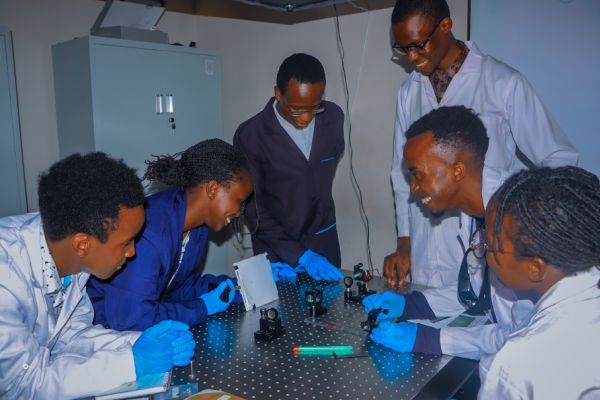Author: Aitor Villafranca Velasco
Translation: Björn Jörges
Author note: In this article, the term “queer” is used to refer to any sexual orientation or gender identity outside of the cis-heteronormative system.

When facing prejudice and speculation, science has always relied on objectivity and self-criticism to advance our understanding of the world. However, topics and methods of choice are never fully free of subjectivity and unconscious biases. Paleontology provides us with some striking examples of cultural stereotypes that led to gross misinterpretations: for instance, larger Tyrannosaurus Rex skeletons were erroneously presumed to be male and Maiasaurios (literally “good mother reptile”) skeletons found closer to nests were – again erroneously – interpreted as female.
Feminist and antiracist movements have been pointing out not only these cultural biases, but also the lack of an equality of opportunities in academia, which of course also affects the LGBTIQA+ community.
The Lay of the Land
One of the perhaps clearest examples for the complex relationship between science and the queer community can be found in how academia treats trans issues. Trans people have been pathologized relentlessly by cis scientists without any personal understanding of the trans experience, and transness only stopped being considered a mental disorder by the World Health Organization in 2018.
However, when looking at this question from a scientifically rigorous point of view, it becomes clear that trans adolescents who face pathologization experience higher rates of depression, anxiety, suicidal ideation, while those in an affirming environment enjoy the same levels of mental health as their age-matched cis peers. The science is clear: the psychological challenges that trans people face are not caused by internal problems with their personality, but rather are a direct consequence of the rejection and discrimination they face from the wider society.
One may think that diversity only matters in fields of study that directly impact the respective communities. However, studies show that more diverse teams are more creative and diligent and have a greater ability to view an issue from different perspectives.

This equally holds true in the natural sciences: diversity favors and amplifies innovation. However, diversity in academia should not only be seen as a tool to advance science, but rather as a necessary goal when imagining a more just future. Any person, independent of their gender, sexual orientation, or identity, has the right to access and develop a scientific career, with equal opportunities and without fear or discrimination getting in the way of their professional development.
The Queer Experience in Academia
According to a survey from 2015, only half of all respondents – all from a social science setting – were fully or nearly fully out of the closet in their workplaces, while the study reports an even lower percentage in disciplines with fewer women, like engineering or math.
This is a stark reminder that feminism is an integral part of the fight for LGBTIQA+ rights, all the while adding to a growing number of concerning statistics about the closet in the workplace in general. An international study from 2018, for example, showed that 41% of queer people who were out in their private life returned to the closet when they entered the workforce. Three out of four LGBTIQA+ people have hidden this aspect of their identity at work at least once.
This matters because being closeted requires a constant effort of vigilance to keep up appearances, which takes a toll on productivity and mental health. Coming out is still a courageous step given the persistent implicit and explicit discrimination queer people are subjected to in society: the LGBT Climate in Physics report of the American Physical Society showed, for instance, that more than a third of LGBTIQA+ respondents had considered quitting their job because of harassment they had suffered or witnessed.
To understand the discrimination the LGBTIQA+ collective experiences in a scientific environment it is crucial to view the issue from an intersectional perspective. Frequency and intensity of harassment and discrimination are intrinsically modulated by other factors like gender, racialization, and disability, among others. For example, while 31% of gay, bisexual, and trans men had witnessed or experienced harassment in their work environments, this percentage rose to 44% in their female counterparts.
Similarly, while 30% of LGBTIQA+ people overall judged their work environment as “discriminatory”, “lacking” or “unequal”, 49% of trans people felt this way – not even to speak of all those trans people who don’t have access to a scientific career because of the inhumane unemployment levels they face (85% in Spain in 2017).
These trends were confirmed in the Exploring the Workplace for LGBT+ Physical Scientists report which was published in 2019 by the Institute of Physics, the Royal Astronomical Society and the Royal Society of Chemistry in the UK.
The Way Towards a More Egalitarian Future
If we want to learn how to create more diverse and inclusive academic spaces, the feminist movements in these sectors can provide invaluable insights.
Among all the strategies that are necessary to make science more welcoming and appealing for women (institutional support, promoting science in young girls, equality trainings in work places, …) a particularly important one is the promotion of role models. For example, a direct link has been shown between the number of female role models in a certain field of study and the number of female students choosing this field. And globally, we only need to look at the history of Nobel prize winners in the natural sciences to realize just how starkly overrepresented straight white cis men are. In Physics, for example, only five winners out of 224 since its inception were women (three of which since 2018).
This discrepancy cannot be explained simply by the gender balance in physics, but rather by other sources of discrimination like a persistent devaluation of the research done by women prevalent in certain academic sectors.
Ben Barres, a trans scientist in Neurobiology, observed, for example, how colleagues started valuing his work much more after his transition.
In this context, openly queer role models like Sophie Wilson, Carolyn Bertozzi, Nergis Mavalvala or Barres himself are particularly laudable and necessary.

Another crucial aspect in the fight for the rights of minoritized groups are grassroots organizations. Diverse collectives that work at the intersection of Science and queer issues have been founded all over the globe (500 Queer Scientists, Out in STEM, NOGLSTP, …) and we now celebrate the LGBT STEM Day annually on November 18th. In Spain, we founded PRISMA in 2019, a national non-profit organization that fights for sexual and gender diversity in Science, Technology, and Innovation.
It appears that the need for diverse voices (and a true equality of opportunities) is finally starting to be acknowledged by the scientific community. It is our task to open up academic spaces for queer people of all origins and genders, orientations, and identities and to transform their contributions into tools of inclusion, resistance, and equality.
The author thanks “Mujeres con los Pies en la Tierra”, the Spanish collective of feminist women in Natural Sciences, and Gloria Pérez Ortiz from COGAM – Educación.





